The investigations of the group focus on both the biology and the eco-physiology of marine macroalgae. We foster an interdisciplinary, collaborative approach to address challenging questions, with a combination of taxonomy and eco-physiological approaches (both in field and laboratory).
The activities within the current funded programs are addressed to three main research lines:
1) Macroalgal biodiversity and evaluation of the Quality Status of water bodies
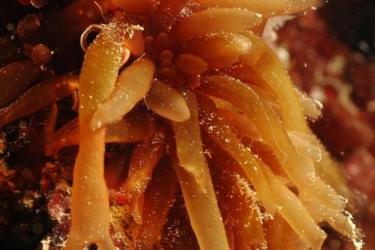 In the past decades, it has been recognized worldwide that spatial and temporal patterns of species diversity and physical and biological habitats structure have changed as a result of anthropogenic disturbances. Diversity within and among species drives the functioning of ecosystems (i.e. biogeochemical cycles, productivity, climate regulation) through countless reciprocal interactions with the physical and chemical components of the environment.
In the past decades, it has been recognized worldwide that spatial and temporal patterns of species diversity and physical and biological habitats structure have changed as a result of anthropogenic disturbances. Diversity within and among species drives the functioning of ecosystems (i.e. biogeochemical cycles, productivity, climate regulation) through countless reciprocal interactions with the physical and chemical components of the environment.
The benthic algal flora, widely used to monitor coastal ecosystems, is regarded as a good descriptor of environmental features, and is able to highlight changes in the ecological parameters through its specific richness and community structure. This is also the basic approach of the European Water Framework Directive (EC, 2000) and several biological indices based on macroalgae have recently been proposed for the Mediterranean Sea.
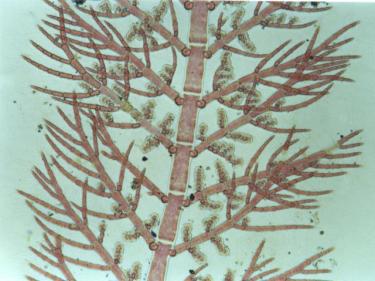
Our group is involved in several researches aimed at the implementation of long-term and large-scale monitoring programs on benthic flora biodiversity, habitat distribution, status and trends, along the coastline of the Adriatic Sea. In this context, high-resolution geographic information system databases have been produced to assess the quantitative spatial distribution of the endemic Fucus virsoides and of marine Angiosperms along the Northern Adriatic coastline. The studies carried out in the last years permitted us to update the check list of the Northern Adriatic marine flora and to highlight important changes in the marine vegetation. These shifts mainly involve the structure of the algal communities: e.g. migration of sciaphilous macroalgae in shallower waters, reduction/disappearance of habitat-forming species, increase of turf and opportunistic taxa.
2) Ecophysiology and restoration of marine forests (Cystoseira s.l., Fucus)
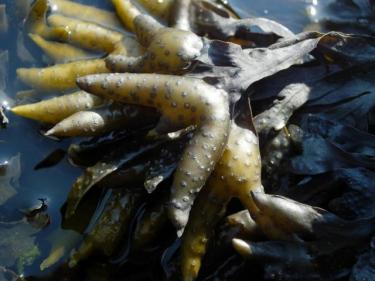
Fucoid forests, thanks to the three-dimensional structure of their canopies, increase the spatial heterogeneity of rocky shores, thus sustaining rich communities of organisms. They provide food, shelter and nursery to rocky reef fishes and invertebrates, control the structure of the associated benthic community and foster coastal biogeochemical cycles and productivity. Human impacts including pollution, habitat destruction, maritime traffic and overgrazing consequent to overfishing are severely hampering these ecosystems, causing regression or, in some cases, even local extinction. Recently, evidence has also shown the role of climatic stressors on their disappearance.
Owing to their great ecological value and their endangered status, Fucus virsoides and all the Cystoseira s.l. (apart from C. compressa) are considered threatened and are object of conservation (e.g. amended Annex II of the Protocol of the Barcelona Convention UNEP; Habitat Directive – Habitat 1170). Although necessary, conservation efforts are not sufficient for the enduring survival of these habitats, thus the restoration of these habitats represents the ultimate solution. Currently, recruitment enhancement is the preferred restoration technique.
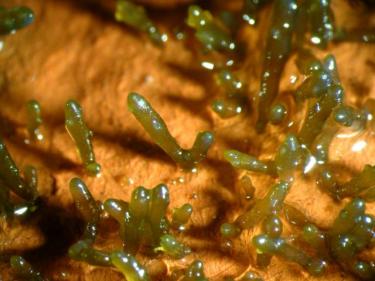
Our group is involved in several research activities aimed at the restoration of Cystoseira s.l. and Fucus forests. The main goals of our research group are:
-to study the biological and eco-physiological responses of our target species to the drivers of their reduction/loss (e.g. herbicides and other emerging pollutants, thermal and osmotic stress, grazing).
-to develop innovative and effective procedures for the restoration of fucoid forests.
Special attention is paid to the early post-settlement and juvenile stages, whose vulnerability has been long recognized, but whose biology and physiology are still poorly known.
Link to the ROCPop-LIFE project
3) Coralline red algae, coralligenous and rhodolith Beds
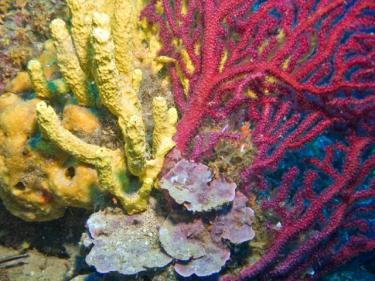
Coralligenous is a biogenic substratum that thrive in relatively calm water at low irradiance (between 20 and 100 m depth), resulting from the building actions of calcareous organisms, in particular of encrusting coralline algae.
Coralline red algae growing on pebbles, shells or on skeletal fragments of other organisms, under certain environmental conditions, can form free living forms called rhodoliths. The accumulation of rhodoliths and Peyssonneliacee on detritus with constant-flow laminar bottom currents, form the so-called rhodolith beds (between 9 and 150 m depth). Coralligenous and the rhodolith beds form a complex structure that increase the habitat biodiversity, thus they are hotspot of biodiversity. Moreover, for their carbonate thallus, they are a key component in the cycle of carbonate budget. For these reasons, they are benthic marine habitats of high interest for national and international conservation (European Community Habitat and Species Directive 92/43/EEC – Annex V; Canals and Ballesteros 1997; Water Framework Directive 2000/60/EC; UNEP MAP RAC/SPA, 2008; Marine Strategy Framework Directive 2008/56/EC).
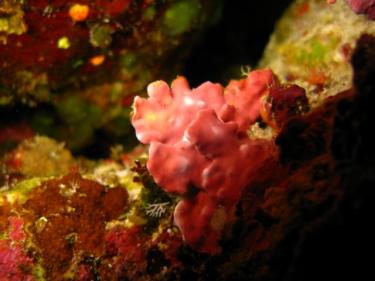
To fulfil the Habitats Directive and to be in line with the measures of environmental protection delineated by Horizon 2020, it is urgent to identify habitat types that deserve management and protection.
In the framework of some National and International programs our group contributed to broaden the knowledge of species composition and structure of macroalgal assemblages growing on the biogenic outcrops of the Adriatic, investigating their spatial variability and the environmental variables and geo-morphological features that accounted for the observed variability. These researches also permitted to describe new taxa for the Adriatic and Mediterranean by molecular and morpho-anatomical studies.

In the context of the Marine Strategy, our research has focused on the structure, identification of the dominant species and the presence/abundance of diseases of coralline algae in the rhodolith beds of the Italian coasts, with the aim of assessing the conservation status of these habitats.
Although our research is mainly focused on the Mediterranean Sea, studies are also conducted on bioconstruction in other geographical areas, such as on coral reefs in the tropics.
Furthermore, for their carbonate thallus, studies are underway on the biomineralization processes of coral algae that allow us to evaluate the effects of climate change on these organisms, as well as any correlations with the phylogeny of the different taxa.




